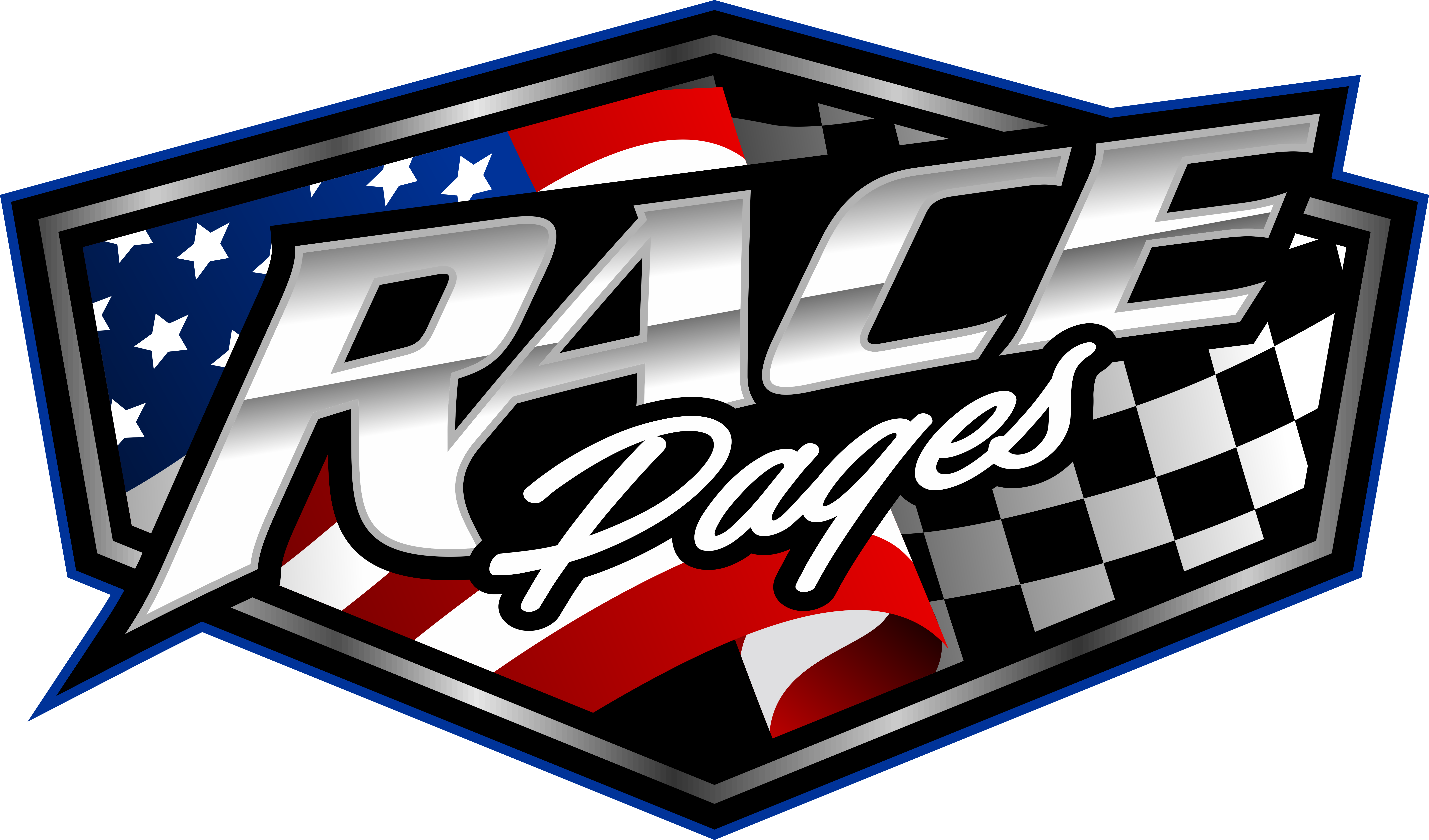The first year of the century’s second decade couldn’t have started much worse for NHRA Pro Stock star Greg Anderson. With his team owner and close friend, Ken Black, fighting for his life in a Las Vegas hospital after suffering a stroke last December, Anderson’s Mooresville, North Carolina, home was gutted by fire just one month later.
Editor’s Note: This story originally appeared as the cover story in DI #47 in November of 2010.
Fortunately, no one was injured in the blaze, but Anderson’s personal life obviously was in turmoil.
The transplanted Minnesotan regrouped and rebounded with an impressive final-round showing in the 2010 NHRA opener at Pomona in February, but at least some of the swagger and confidence of the three-time consecutive series champion seemed missing. He readily admits to being distracted by the personal tragedies and falling behind in critical off-season research and development (R&D) and testing, setbacks manifested in a series of middle-of-the-pack qualifying results and early-round losses that extended several months into the season.

Still, Anderson never fell below fourth in points, while teammate and 2006 Pro Stock champion Jason Line hovered around the fifth- and sixth-place spots. Line delivered the team’s first win of the year at Gainesville, Florida, in the third event on the schedule, then finished runner-up a few races later in Chicago, but it wouldn’t be until the season’s halfway point at Norwalk, Ohio, that Anderson would reach another final, where he dispatched Allen Johnson for the 61st race win of his career.
He didn’t have to wait long for his 62nd, as Anderson prevailed again in the next event at Seattle, the opening match of the annual three-race, so-called Western Swing, while Line kept the final-round streak alive, though suffering a loss to Jeg Coughlin Jr. in the following event at Sonoma, California.
Both KB Racing drivers made it into the NHRA’s Top 10 Countdown to the Championship Pro Stock field, with Anderson placing fourth and Line fifth after 17 races were in the books. A disappointing outing with second-round losses for both at the 56th annual U.S. Nationals opened their Countdown quests, but Anderson again rebounded with his third win of the year just a couple of weeks later in September at his home track in Charlotte.
“When I think about how I’ve struggled at that race track in the past I just wasn’t really looking forward to going back there and needing a victory to get back into the Countdown,” Anderson admits. “And after the start we had this year with Ken going down like that and then we had the fire and lost our home, I guess you could say we had a very interesting off season that kind of threw us behind the eight ball.
“I don’t want to make excuses, but I think we did get a little bit behind and it’s taken the last three or four months before the Countdown to really get our act in gear and catch up to the rest of the guys. So to be quite honest, the first four or five months this season we were a little behind and it was hard to win, but we’re finally turning the corner and running good enough to go win races again and have a chance at winning another championship and we’re feeling a whole lot better.”
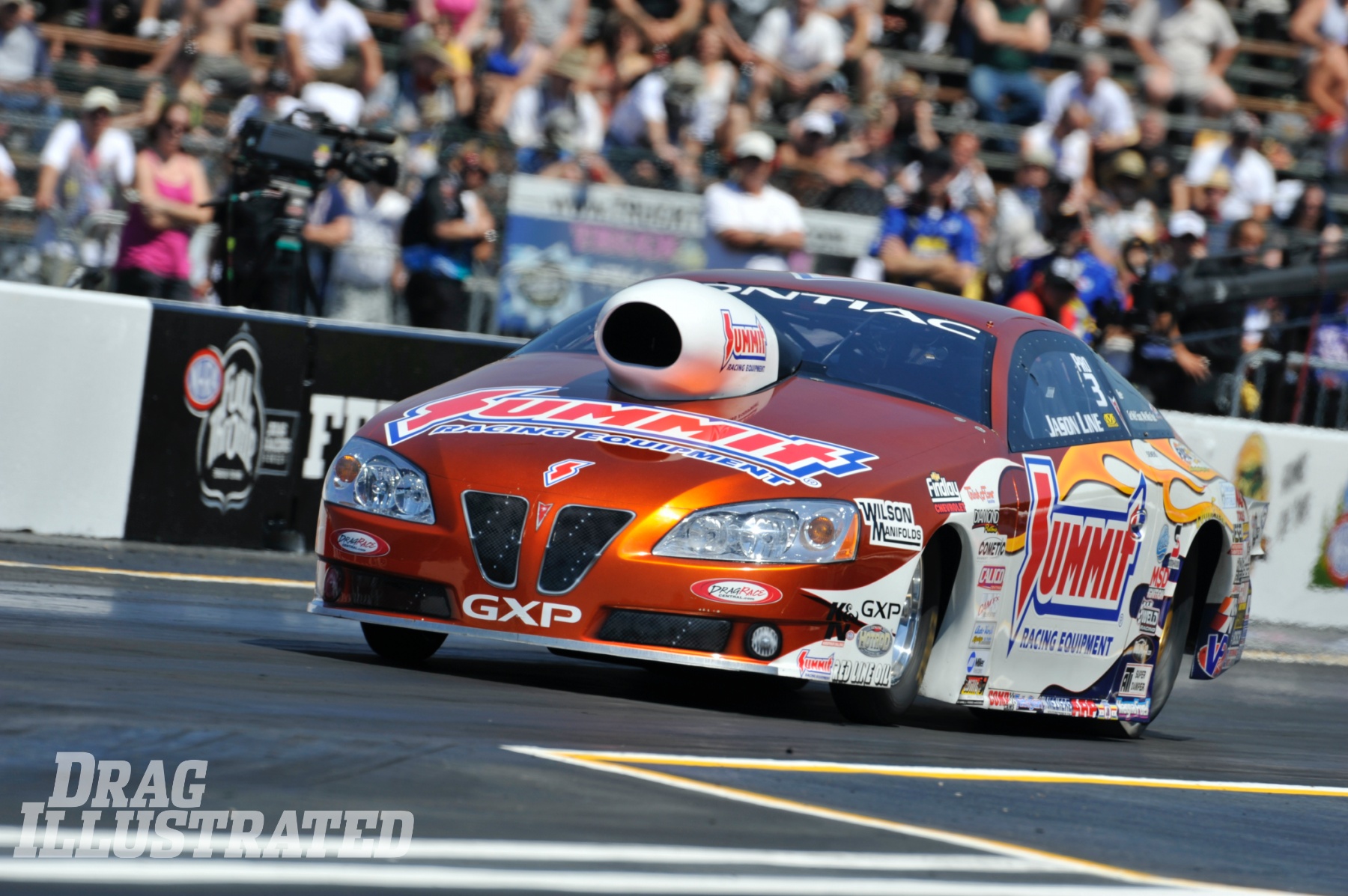
Though it may sometimes seem like Anderson has been a fixture atop the Pro Stock field forever, he made his first start in the class just a dozen years ago in 1998, scored his inaugural win in 2001 and didn’t mount a full-time effort until 2002 when he won two national events. A record-setting campaign followed in 2003 along the way to Anderson’s first NHRA championship. He won a class record 12 events; earned an NHRA record 67 round wins; set national records for ET and speed; notched 19 track records and secured 14 number-one qualifying positions as one of only two Pro Stock drivers to qualify for all 23 national events that season.
Incredibly, he did even better in 2004, claiming a new record 15 national-event wins after appearing in a record 19 final rounds with a record 76 elimination round wins. Anderson also earned a record 16 top qualifier awards and ultimately was voted Driver of the Year by nationwide motorsports media members after securing his second-straight championship.
Anderson tapered off somewhat in 2005, making “only” seven first-place starts and winning eight times in 11 final-round appearances while wrapping up his third consecutive Pro Stock season title to end one of the most dominating runs in drag racing history, regardless of class.
And though Anderson is yet to return to the top spot on the championship podium, he remains a consistent top-three finisher each year (eight years straight and counting) and enjoys a 10-year streak of delivering at least one victory annually.
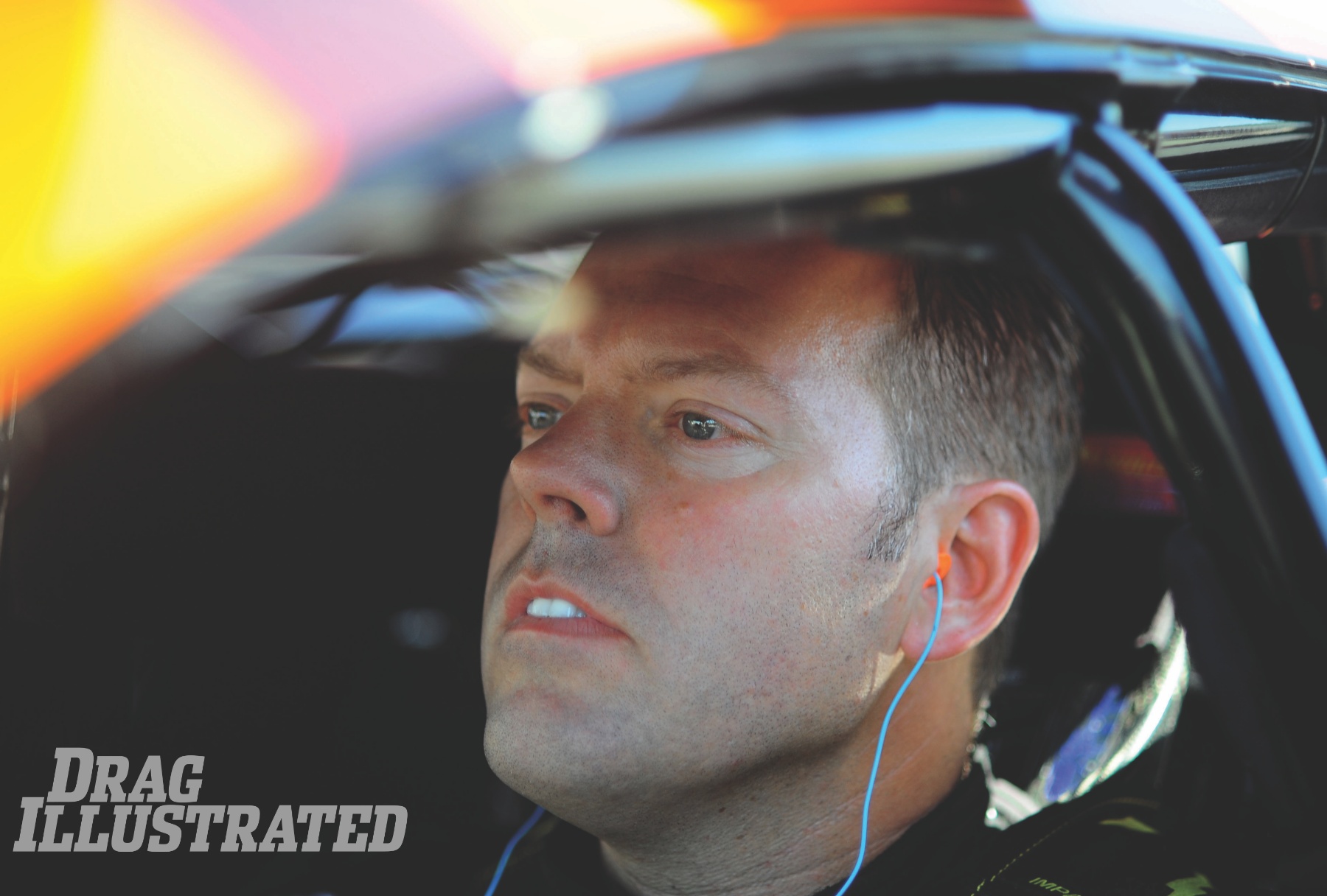
Line, meanwhile, is a former NHRA Stock Eliminator champion who entered the Pro Stock fray with a part-time effort in 2003 before being awarded 2004 NHRA Rookie of the Year honors based on the strength of four wins in eight final-round appearances that year. Another four wins complemented a pair of number-one starts the next season before Line broke through with his first Pro Stock championship in 2006 after scoring yet another four race wins.
“That all seems so long ago now,” Line says. “The face of Pro Stock has certainly changed over the last few years and it’s tough right now, really tough, and there’s a bunch of cars that can all run about the same, which just makes it really hard. We certainly enjoyed things more in the past when we had a bigger advantage.”
Anderson agrees, saying he doesn’t believe his years of dominating the class was a negative influence.
“I heard this all the time back when I was winning a lot of races, that people don’t like to see the same guy win every week, but I don’t know. Yes, people certainly don’t want the same thing to happen every week, but I don’t think it’s all bad to have a dominant driver like John Force or Dale Earnhardt Sr. was back in the day. People either loved Earnhardt or they hated him because he won a lot, so I guess it’s not necessarily a bad thing if you’re disliked for that; it’s still good for the sport,” he insists.
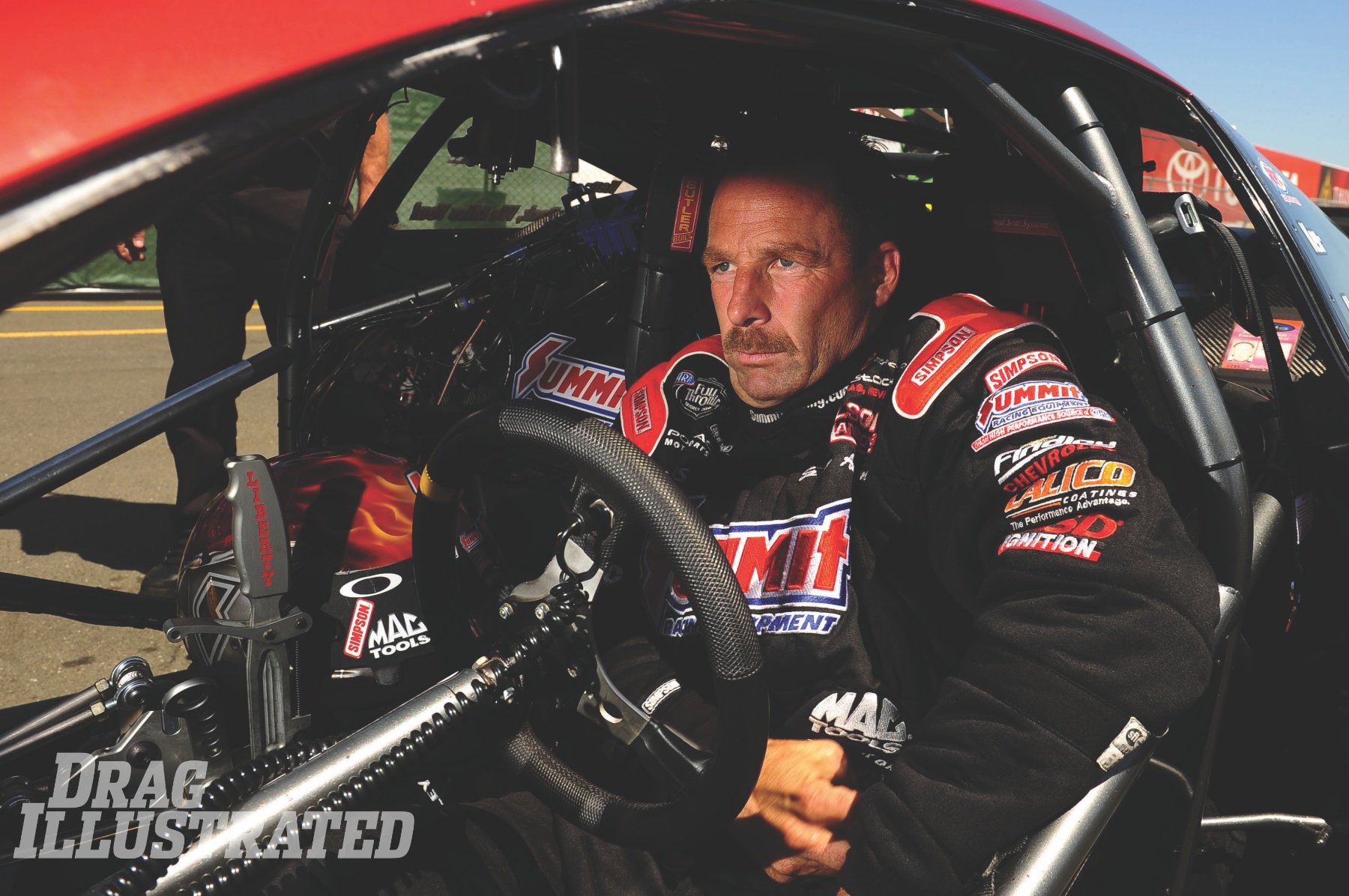
Furthermore, Anderson says he and Line are “digging hard” to return to setting the pace in Pro Stock, even if it means becoming a target for fans and competitors alike.
“A lot of people probably would not want to have that extra pressure or the target on them, whatever you want to call it, but I would much rather have it; I would much rather have a race car that’s capable of going down the track and outrunning every other race car out there and put the weight back on the driver’s shoulders and seeing if he can get the job done by not screwing anything up,” Anderson says.
“I probably complained once or twice when we were in that position before, but now that we’re not I’d take that back in a heartbeat, without a doubt. You know what? If you can’t handle the pressure you don’t need to be doing this deal,” he adds.
A lot of that pressure comes from on-track parity within the class, but both Anderson and Line agree a lot of that parity is a direct result of something far more pernicious than just hard work—personnel movement.
“People ask me about that almost every day. They say, ‘How did you lose your advantage. How did the other guys gain so quickly?’ and it’s through information trade off, information leakage, however you want to put it, it’s because of employees changing teams and you just can’t stop that; there’s nothing you can do about it,” says Anderson, who serves as team manager in addition to his shop and cockpit duties.
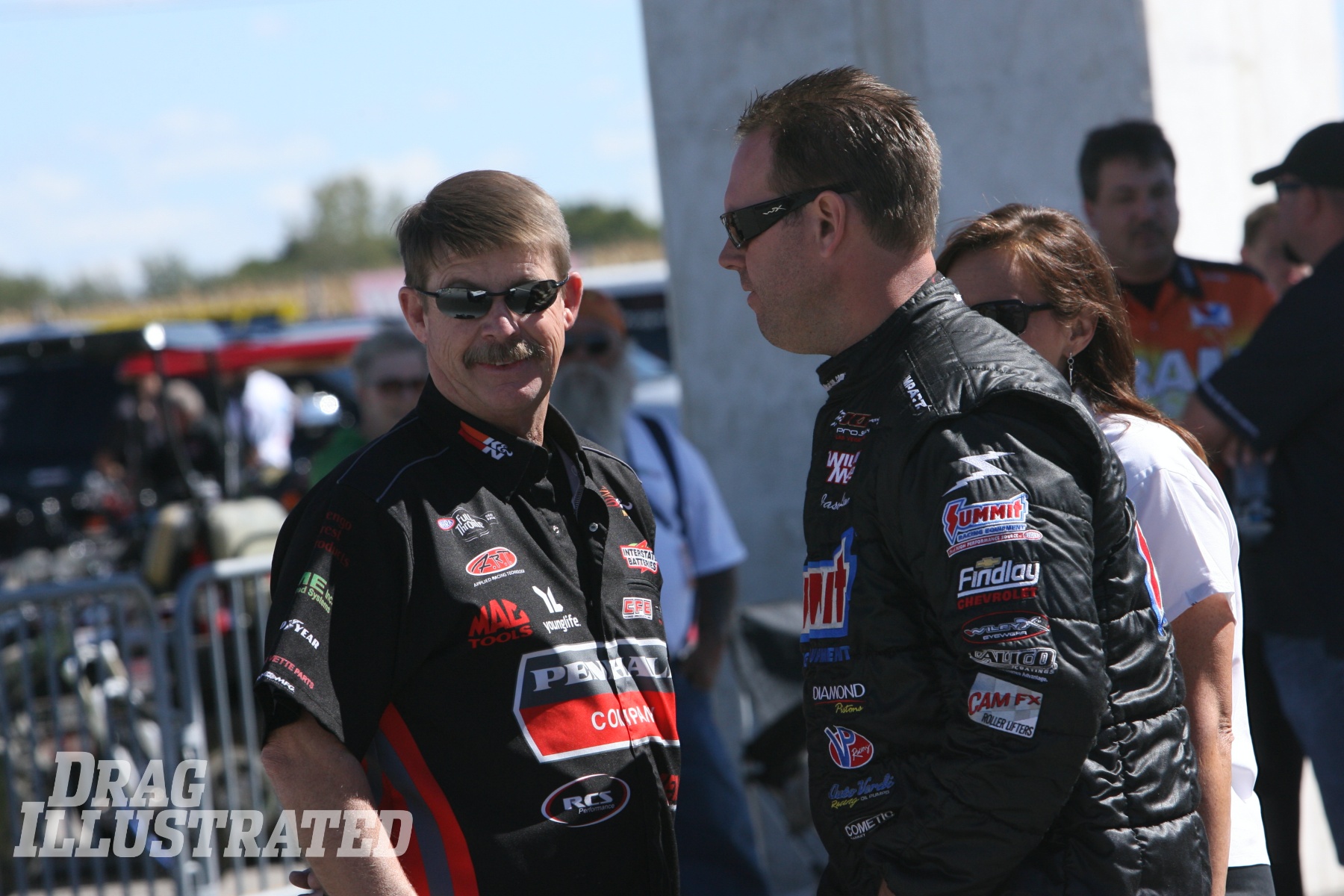
“The three teams that have won the Pro Stock championship for the last seven or years or so are all in the Charlotte area now. Myself and Jason are here, the Victor Cagnazzi team is here with Jeg (Coughlin) and the Mike Edwards’ team is here, as is Johnny Gray, so yes, we grit our teeth about it pretty much every day and do the best we can to protect ourselves, but really, there’s not much we can do about it.
“It’s just the nature of the beast. You try to be as confidential with everything you can, but when you have a race team of 20-some people you need them all pulling on the same rope, so they all need to be involved and know what’s going on to make things better. So everybody pretty much knows what’s going on in the entire shop and when you have one of those employees go across town, there goes all that knowledge, some of which has taken years to attain.
“It happens in NASCAR every day and it’s definitely happening in drag racing. That’s exactly why you have so many teams that have stepped up their level of competition lately; it’s the transfer of information, basically, from shop to shop.”
As head engine builder for the Summit-backed Pro Stock team and after holding a similar position with a top-flight NASCAR operation for several years before joining Anderson, Line feels a little more personal frustration at losing whatever horsepower-making secrets he may have uncovered.
“Everybody flip-flops guys who bring a little bit of knowledge with them wherever they go,” he points out. “It tends to even things out and makes it that much harder to get an advantage—and keep it—because they’re not going to unlearn things when they leave, that’s for sure. It’d be nice to download them before they walk out the door, but that’s not about to happen so we just have to live with it.”
Of course money always remains a decisive factor in how competitive any race team can be and Anderson estimates it takes upwards of $2 million a year to mount a championship-contending Pro Stock effort. That figure rises to about $3 million for a two-car team, he says, since facilities, specialized equipment, tools, transportation and personnel can often be shared among both entries.
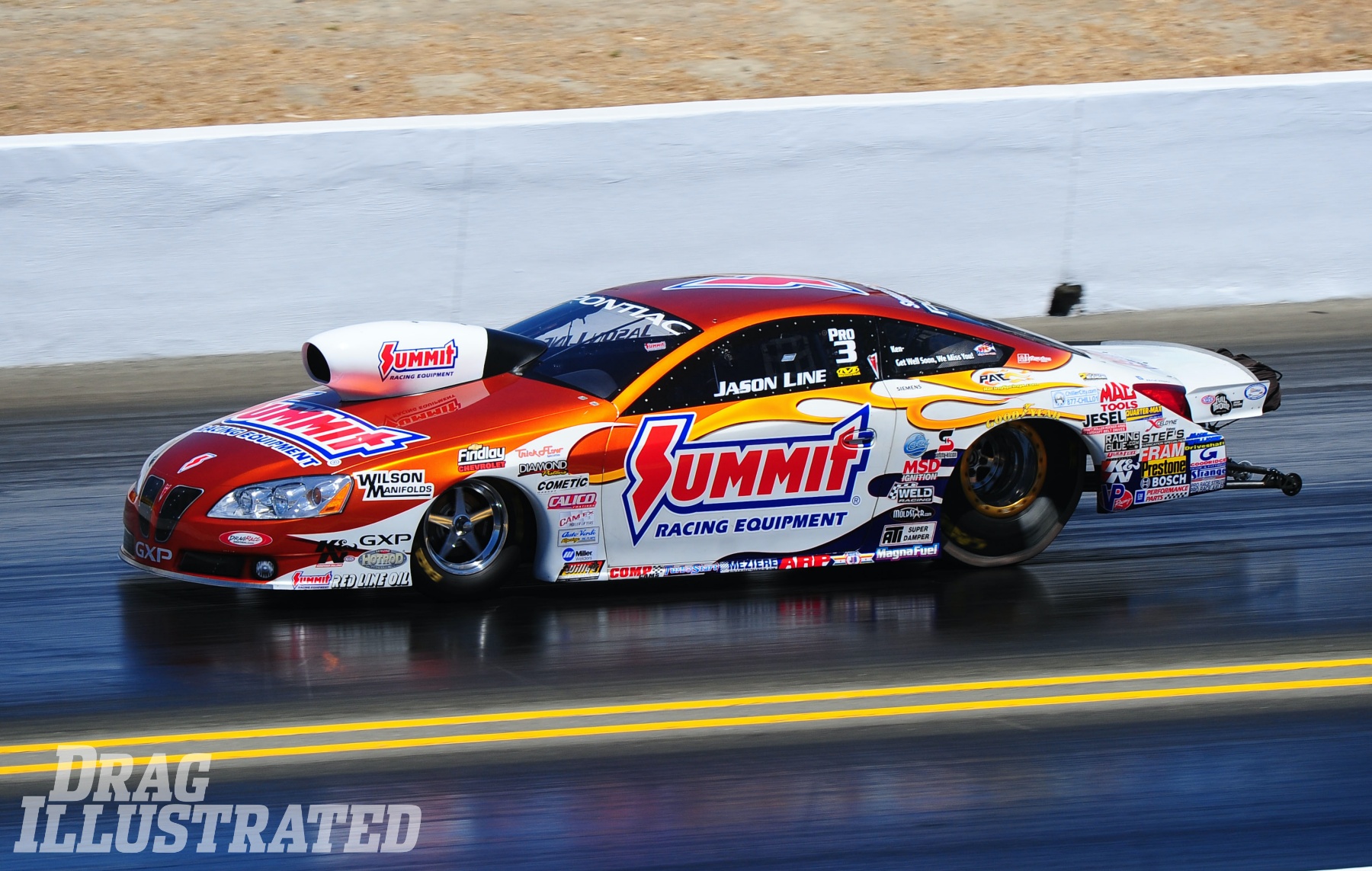
And while “still a lot of money,” Anderson concedes, he stresses the extra expense can provide two very important benefits: additional learning opportunities and better value for sponsors.
“Pretty much if you look at history what you’ve got to have is a multi-car team and again it’s for the same reason that NASCAR guys do it; you just get so much more data that you can learn from and so much faster. You just get to try so many more things and see their results so much faster than if you were trying everything individually on only one car,” Anderson says.
“You get exposed to the race track a whole lot more and quite honestly, we do a lot of research in the shop and try to come up with new things to make more horsepower and make the race car work better, but it really comes down to trial and error on the race track. The more times you get to try things and the more time you can spend on the race track or on the dyno, the better chance you have of going forward.”
Line says R&D is the single biggest expense for an operation like KB Racing, explaining that “each dyno pull costs a lot just because of all the perishables involved.” He cites valve springs as an example, saying it’s not at all uncommon to go through more than $1,000 worth in just one day of testing.
“Then of course it takes a lot of time and everybody has to get paid, so that’s a big expense, too,” he adds. “It definitely costs a lot of money to go fast; these things are driven by money, there’s no question about it.”
Regardless, Anderson says expenses have stabilized in recent years, largely due to self-policing by the teams.
“We try as hard as we can to keep a budget on things and be realistic about what we spend because, let’s face it; you just can’t go out and spend unlimited dollars just because that may make you win. You have to draw the line somewhere and run it as a business or you’re just not going to be around,” he states. “So I think we’ve all gotten smarter over the last few years and realized we’d better keep things intact and keep our business heads attached or we’re going to outspend ourselves and we’ll all end up in big trouble.
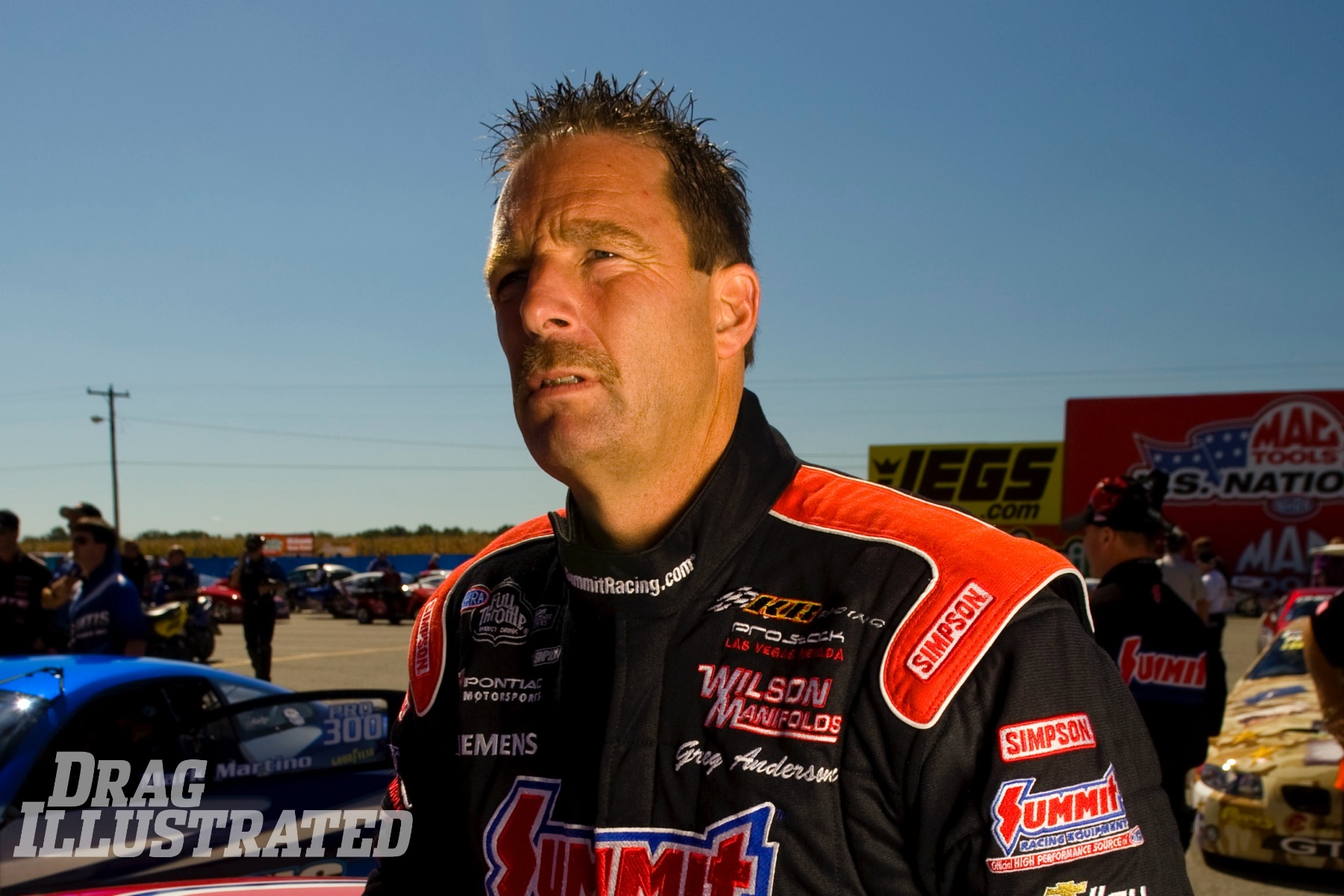
“So yes, it is very expensive and gets a little more so every year, but it could gain a lot faster if we got crazy and didn’t care about what we spend. So I give the rest of the class an ‘Atta boy,’ because I think we’ve all done a pretty good job of trying to keep it in check and somewhat real.”
Something that could upset the delicate balance of fiscal responsibility, however, is the always looming potential of NHRA introducing electronic fuel injection to the Pro Stock class. Both Anderson and Line say they would support the switch, but Line wonders if today’s troubled economy might not present the right time for such a massive undertaking.
“You would definitely have to change the design of the engine to take advantage of it and that’s where a lot of the cost would come in, but I think if they left the option of running both for awhile it would be interesting,” Line says. “It would make us rethink a lot of the things we’ve always done in the past and that’s not a bad thing. It would get everybody’s blood pumping again, that’s for sure.”
Anderson says he would vote in favor of EFI if asked, adding he’s not even sure why there’s not more effort being expended on getting approval.
“I’m not quite sure what the major hold-up is on it, who’s dragging their feet,” he says. “Obviously you have to realize people who build carburetors aren’t going to be in favor, but most of those same type of companies build fuel-injection systems, too, so I’m not really sure why we don’t have it already.”
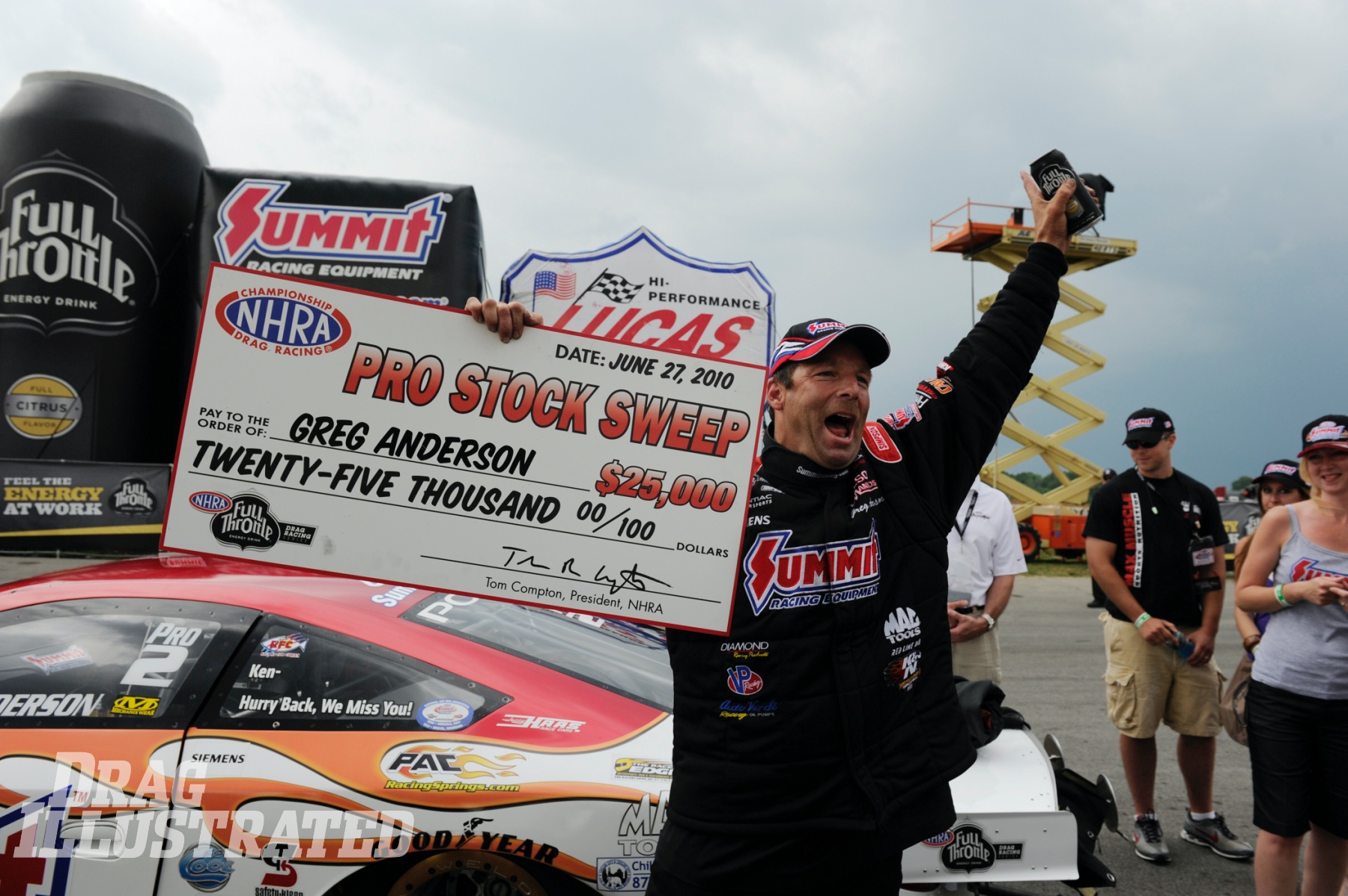
More important to Line would be encouraging and retaining more auto manufacturer support for the class. An excellent starting point, he claims, would be to promote the use of the popular new pony-car body styles in Pro Stock.
“I would love to see cars like the new Camaro being used. It’s a great car and so are the Mustang and the Challenger, and to me they’re all muscle cars and they should be the key players in Pro Stock,” Line says. “It’s an old saying, but in this case I think it would still apply that what wins on Sunday would sell on Monday.”
Regardless of what changes may be in store for Pro Stock, Anderson has just one need to satisfy.
“Quite honestly, I’ve always been a guy that thinks the class needs to get faster every year; that it needs to improve its speed and get quicker in ET. We kind of have such a big gap from Top Fuel and Funny Car to Pro Stock and how fast the cars run and how much noise they make and how much fire they throw out and all that stuff. I guess I kind of deep down wish that our cars would run a bit faster,” he says.
Anderson recognizes, though, that increased speed is accompanied by increased safety concerns, as evidenced by ongoing efforts by NHRA to limit the speed of Top Fuel and Funny Car entries. “So maybe I shouldn’t hope for that, but I’m a racer and I just want to go faster, faster, faster all the time and I think the fans like that, too,” he says.
“I do think they’re pretty safe cars right now, but you can obviously still have a major problem and you can still hurt people, so I don’t know. I haven’t really done the research on what might happen if these cars were 50 mile an hour faster, if they’re capable of doing something like that and still being stable, but I’d still like to see them go faster; I just think it’s more exciting.
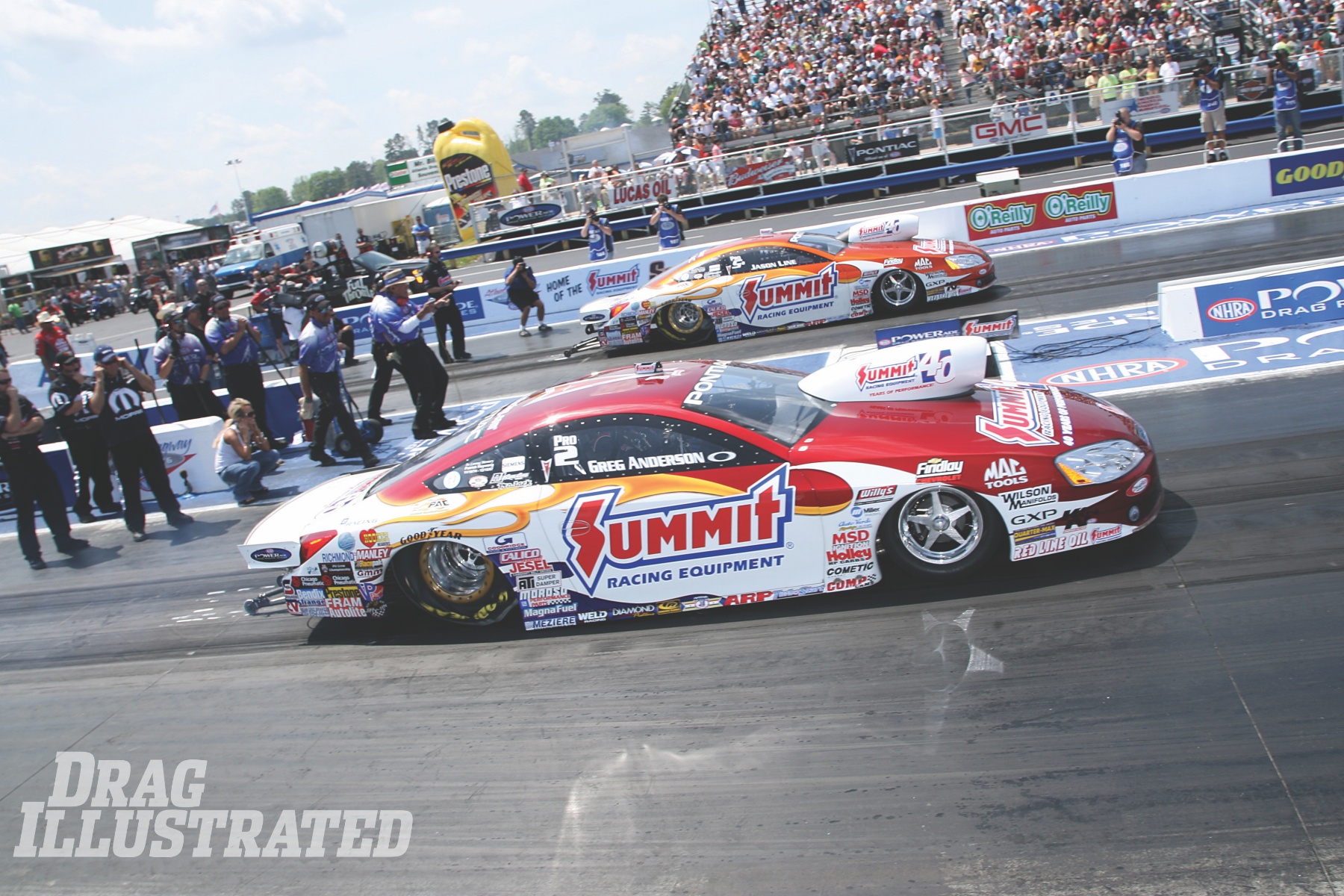
“That’s one big reason why I’m happy we still race to the quarter mile; if we went only to a thousand feet you’d see these cars running maybe 185 or 190 mile an hour and I really believe as a class we definitely have to be over that 200-mile-an-hour mark to excite the fans.”
Now four years removed from the NHRA Full Throttle Awards Banquet champions’ table and after a trying year of perseverance, the KB Racing duo appears ready to regain their stature in the class.
“I think it’s going to be the most interesting playoff year we’ve ever seen, and yes, the class has gotten a lot stiffer and a lot deeper and that’s just the natural progression. It’s like if you look at a stick-and-ball team where the bench has gotten a lot deeper,” Anderson says.
“Quite honestly, we’ve got 10 cars that qualified for our Countdown to the Championship and I can’t pick a winner. Being on the inside you’d think we could tell who has the best hot rod and the best chance to win, but I honestly can’t pick a favorite right now; there are so many guys who could win a race and if they string four or five wins together, any one of them—or one of us—could be world champion.”
The post DI Classic: Greg Anderson, Jason Line and Pro Stock Perseverance first appeared on Drag Illustrated.
